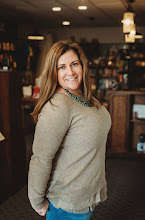Today was our second Writing Wednesday of the school year. Last year I had a handful of kids that asked if they could write with me at lunch time. Most days I rush home for my thirty minute lunch period. Ostensibly I head home to let out my dogs, which I actually do, but in truth I head home because I need thirty minutes during my day where no one is talking to me. It allows me to recharge and have energy for the second half of my day. All this is to say that when I agreed to have Writing Wednesdays last year, that was giving up something that meant a lot to me.
Last year a small group would come. Spreading out around the room, kids would write on Chromebooks while I wrote on my laptop. We’d eat as we typed, the room filled with the noise of keys clicking and the Coffitivity app in the background. I told the kids I write best at coffee shops, so we brought that vibe to the classroom. Towards the end of the year we stopped meeting. Spring fever had hit and they wanted to be social with their friends.
One of my students from last year must have told this new group of students about Writing Wednesdays because a few weeks ago, a student asked if we’d be having them. After talking to a few students, I decided to give it a go.
Last week and this week brought around fifteen students to my room for lunch. Again, we write almost the whole time, just taking the last two minutes to share, if we want, what we’ve been working on at the end. Now out of 125 seventh grade students, I teach 75 of them. I love that students I don’t even teach have attend Writing Wednesdays because they simply want to write. Today I sat with one and we discussed how to make a chapter longer, what types of things he could add.
Towards the end of our time together, we were discussing what we were working on. I shared that I was attempting to write a short story for submission to a publisher for an anthology. That made us pause so I could explain what an anthology actually was. When the students learned that other authors would write short stories too and they’d all be packaged in one book together, a boy said, “Is Jason Reynolds writing one?”
I grinned and replied that the anthology was for adults and in the romance genre. Since Jason doesn’t write in that genre, he would not be one of the authors.
The boy replied, “I bet Jason would be a great romance writer. He can write anything he sets his mind to.” Other writers nodded as they grabbed their cafeteria trays to return them before seventh period began.
I watched them go, grateful for this short time I have with these young writers. Grateful they have authors they admire and believe in. And glad that I got the chance to have Writing Wednesday again, even if I did have to give up my lunch period to do it.
















